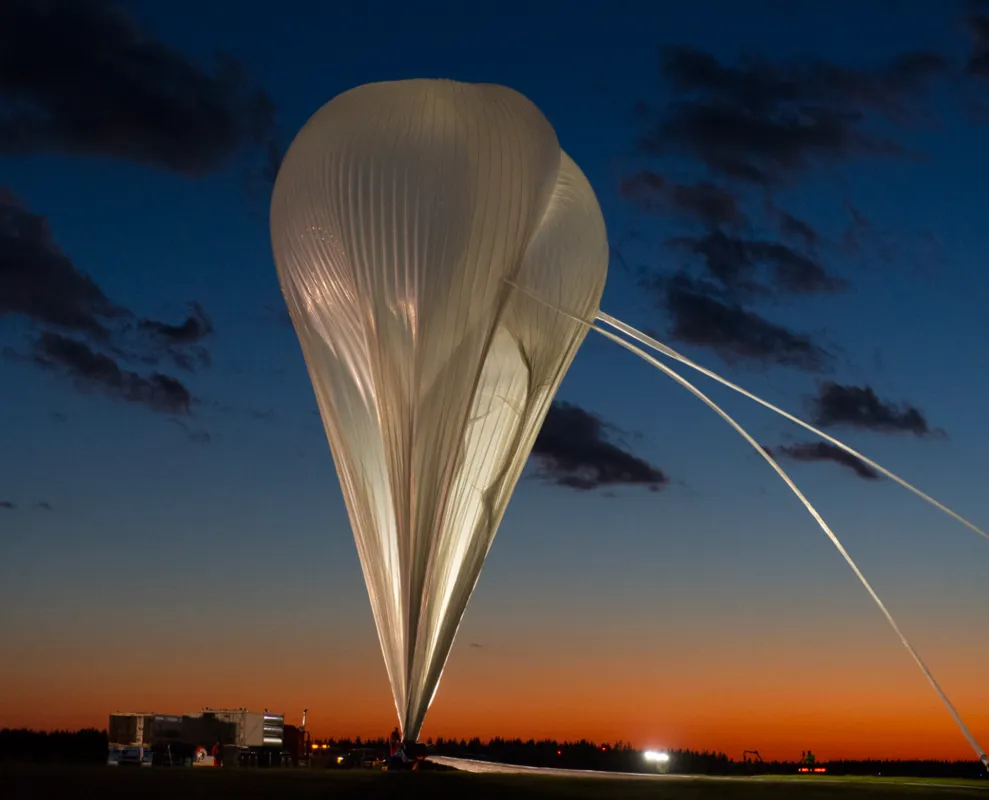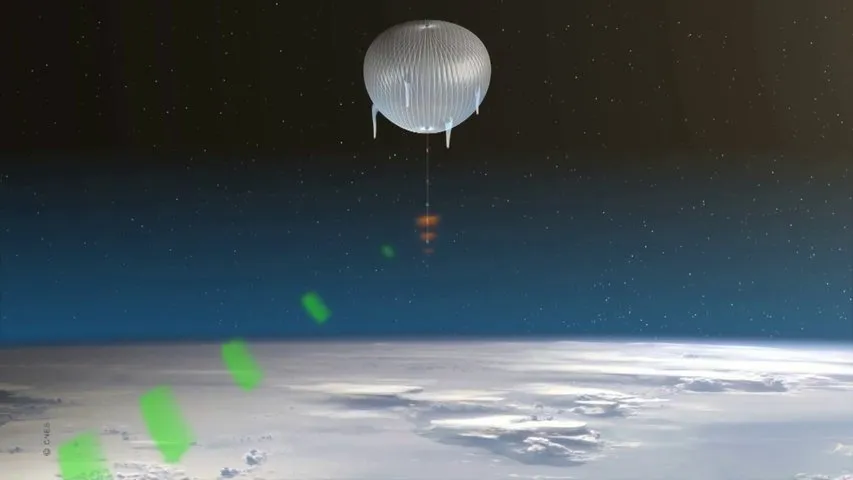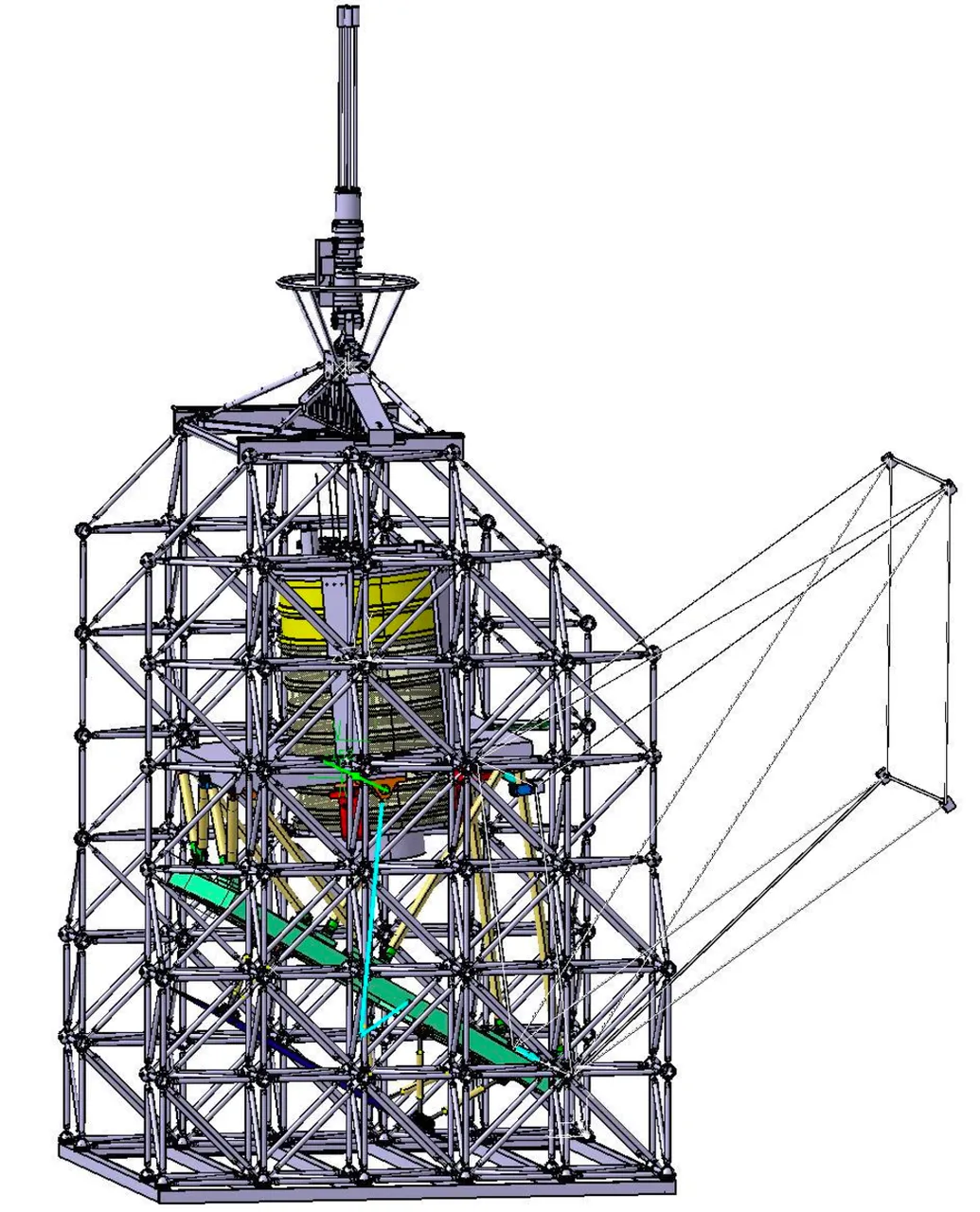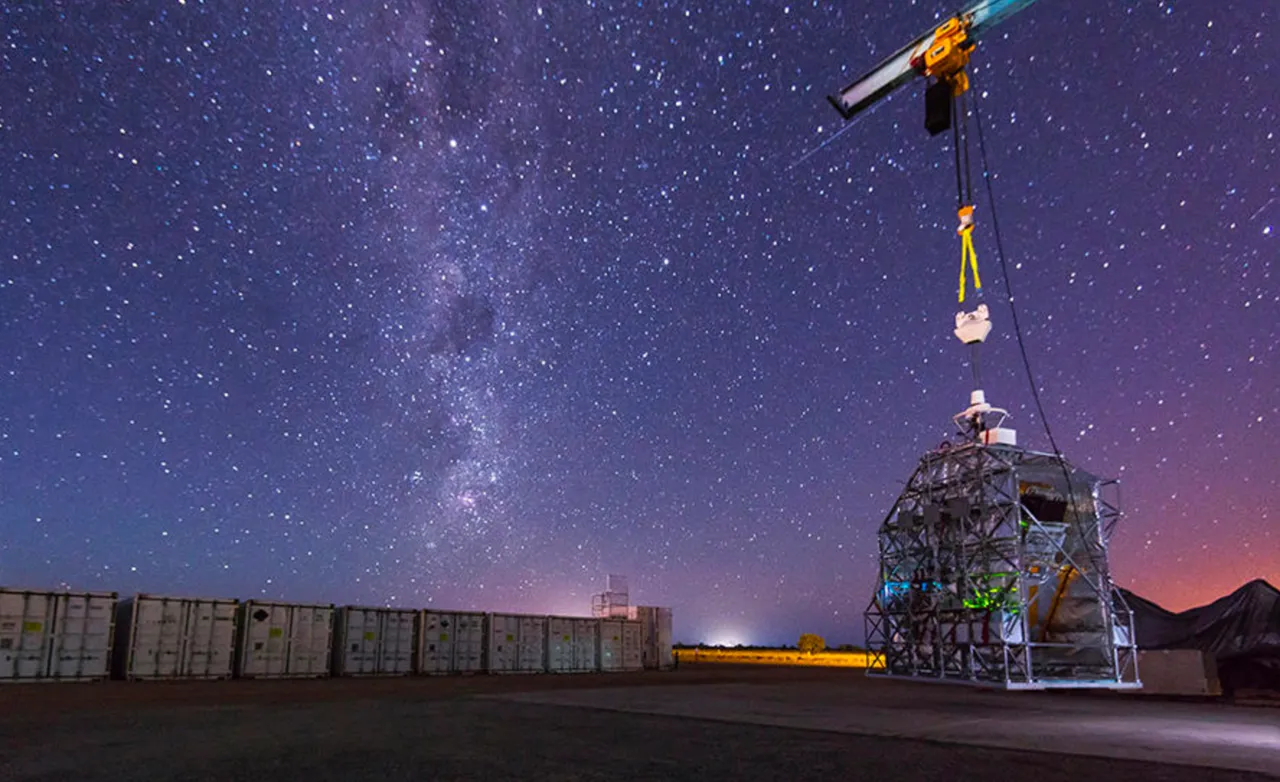With this post, I come back to astrophysics for a moment and will discuss stratospheric balloon experiments allowing for the observation of the universe. Yep, scientific experiments can also been handled with balloons. Not the birthday party version of the balloon, but the huge super-large one of course.

[image credit: CNES]
In particular, I will talk about the Pilot project which I have learned about by reading one of the recent CNRS news bulletin.
The news was about the last mission of the Pilot gondola, an instrument carried by a huge balloon of 170 meters of diameter.
This balloon recently carried out its second flight, where it has been allowed to observe, during more than 30 hours, the Australian sky. Or more precisely the Universe of the southern hemisphere lying way above the Australian sky.
The reason behind this project is tostudy the interstellar dust lying within our galaxy, and its magnetic properties.
WHY USING BALLOONS AS OBSERVATIONAL PLATFORMS
One of the major reasons to use stratospheric balloons to observe the universe is that they are way (way way way way way) cheaper than satellites, in this is true both to make them and to launch them. And as we all know, budget is a severe issue in science today…
Stratospheric balloons are then charged with plenty of scientific apparatuses that may depend on the scientific goal of the mission (infrared radiation, cosmic rays, etc.).
In addition, balloons allow to test in quasi-real conditions the technologies that will be used in space in the future. Stratospheric balloons are indeed reaching the stratosphere (no kidding, this is guessable from the name!), a layer of the atmosphere lying between 20 and 40 kilometers above the ground.
Although we are stil well within Earth’s atmosphere (we often consider the size of the atmosphere to be 100 kilometers height), the conditions in there are hard enough for these technological tests to be meaningful.

[image credit: CNES]
Now why sending balloons out to the stratosphere? First, because it is too high for an aircraft to reach it. So that if we want to get there, we need something else, like a balloon.
But why get there in the first place? Because it is actually one of the best place to observe the universe, at least under specific conditions.
The atmosphere of Earth blocks out part of the electromagnetic radiation from space, so that ground-based observatories are blind to it.
In other words, they cannot handle given radiation wavelengths, on which we want at some point to get information (see below to get some of the reasons).
In this way, launching, via a balloon, scientific instruments at high altitude in an environment where the air is rare (and thus not in the way of the measurements) will allow to get, in a kind of cheap fashion, information on the universe radiation pattern for wavelengths not reachable from the ground.
In short, these balloon projects may be considered as running observations in space, but without being in space (as the stratosphere is part of Earth).
THE PILOT PROJECT IN A FEW WORDS
The Pilot project is an international project aiming to send a balloon to space (with some scientific instrument on board), with a large French participation. This actually explains why I got information from the French CNRS news bulletin.
Once again, the name of the experiment is not random. We need to handle an abbreviation… Pilot stands for Polarized Instrument for Long-wavelength Observations of the Tenuous interstellar matter.
It targets the interstellar dust present in our galaxy and how this dust radiates. This study is complementary to what the Planck satellite did a few years ago. And this is the important key point.
Putting the information of both experiments together will allow to understand, on the one hand, the properties of the magnetic field of our galaxy (intensity, direction, structure, etc.), but also, on the other hand, the contributions of the interstellar dust.
And understanding better what is going on in our galaxy will allow to remove this as a foreground for the experiments trying to understand what is going on much further, at the level of the Cosmic Microwave Background for instance.
THE PILOT INSTRUMENT ITSELF

[image credit: CNES]
The Pilot instrument is shown on the left. Its weight is of about 1.1 ton, and one must lift it up until the stratosphere (at 40 kilometers high, said mentioned above).
In addition, the balloon has had to fly for more than 30 hours, which allowed by the way the apparatus to witness a day-night transition.
There is no one thousand different ways to achieve that with a balloon: as mentioned by some of you in the last steemSTEM physics challenge, one helium balloon is enough, provided it is large enough.
And by large, we here mean a balloon whose volume is 800.000 m3 and that is filled with helium. In terms of radius, it consists of a balloon with a radius of 75 meters. Nothing to do with the party balloons of the movie Up!, although as in the film and in the steemSTEM challenge, buoyancy is the physics principle behind.
Concerning the instruments boarded within the Pilot apparatus, they have been designed in a robust enough fashion, so that they have been able to observe the sky during the entire period (we need to make the best as we can out of them).

[image credit: CNRS]
The instrument contains a telescope (we want to observe the universe after all) made of an array of 2048 bolometers cooled down at a temperature of 0.3 kelvin degrees. A bolometer is a detector specific to the observation of infrared emissions.
It consists of cooled thermistors that will react to any temperature changes induced by, e.g., infrared emissions.
The rest is a matter of translating and amplifying the signal into something recordable by the electronics of the instrument.
THE LAST PILOT AUSTRALIAN MISSION
The last mission of the Pilot experiment happened last April, and is actually its second mission. The balloon left Australia early in the morning to landed roughly one day and a half later, 1000 kilometers away from its starting point.
It flew at an altitude of 39 kilometers during the day, and slightly lower (31-34 kilometers high) as induced by the natural cooling down of the helium (so that the lifting force is smaller) that has however been tamed down cleverly by some ballasts added to the balloon.
All the information recorded is currently being analyzed and a third flight, in Sweden, is being prepared for 2018.
Therefore, there is nothing much to be said yet… But we should stay tuned!
SUMMARY AND REFERENCES
In this post, I discussed the Pilot mission, an astrophysics experiment I have heard about for the first time last month. I introduced the concept of stratospheric balloons and I explained briefly how they work. While the mission is over now, the results are still being analyzed.
It is however already clear that they will allow for a better understanding of our galaxy and of our universe…
Extra pieces of information can be found here: